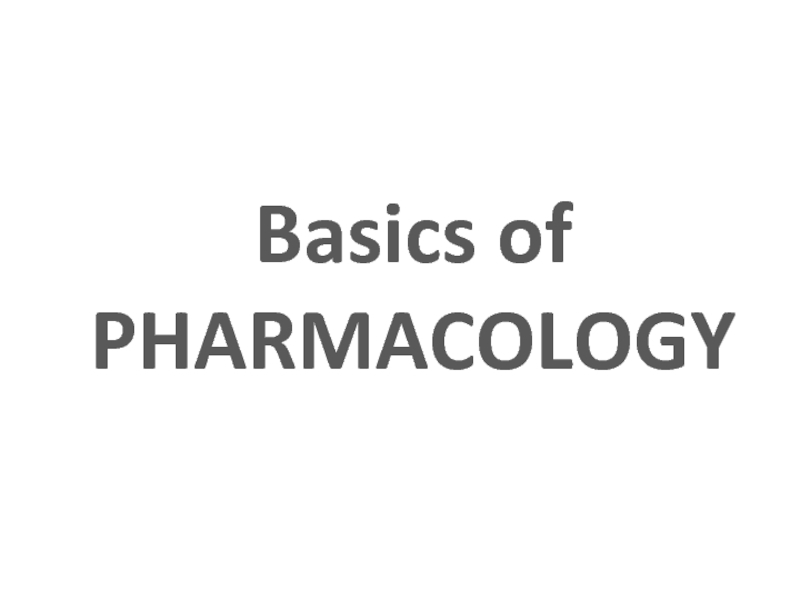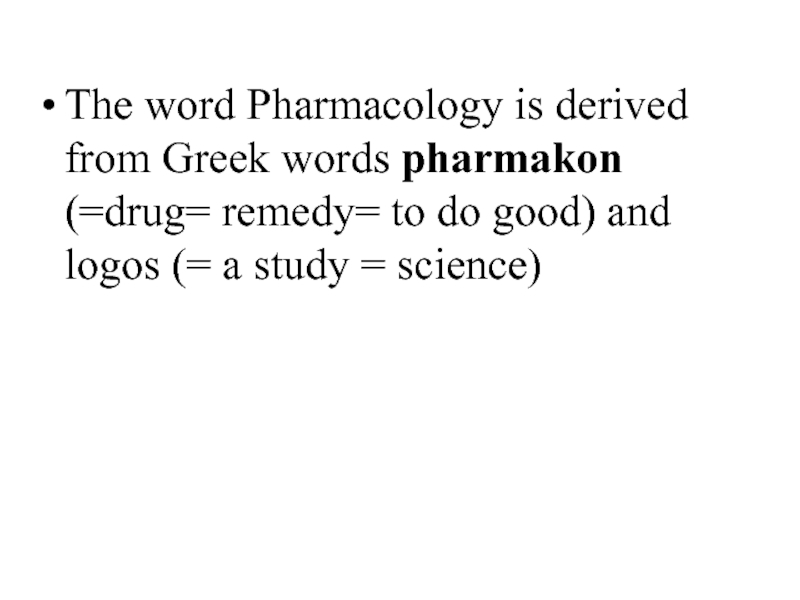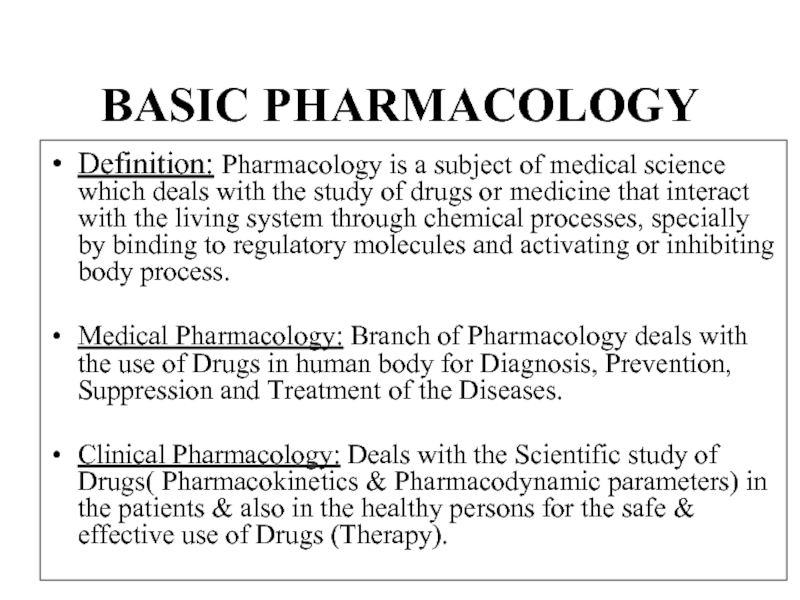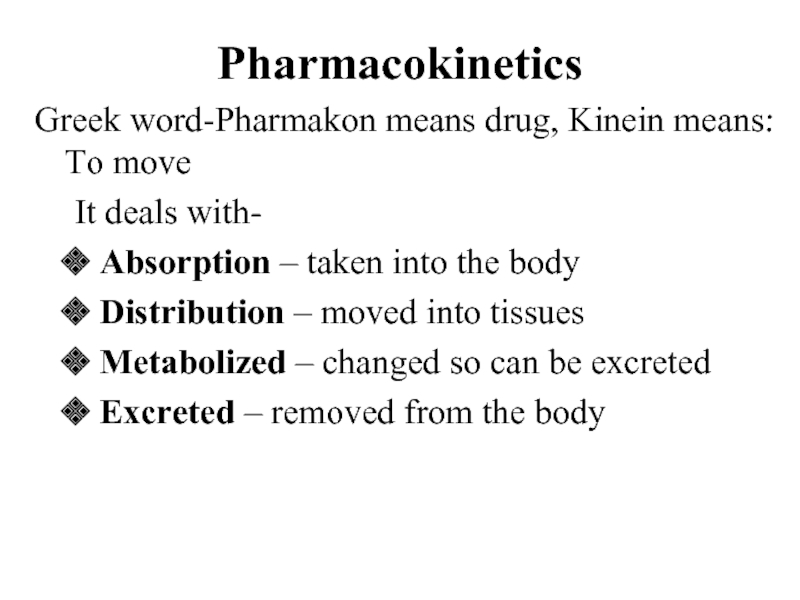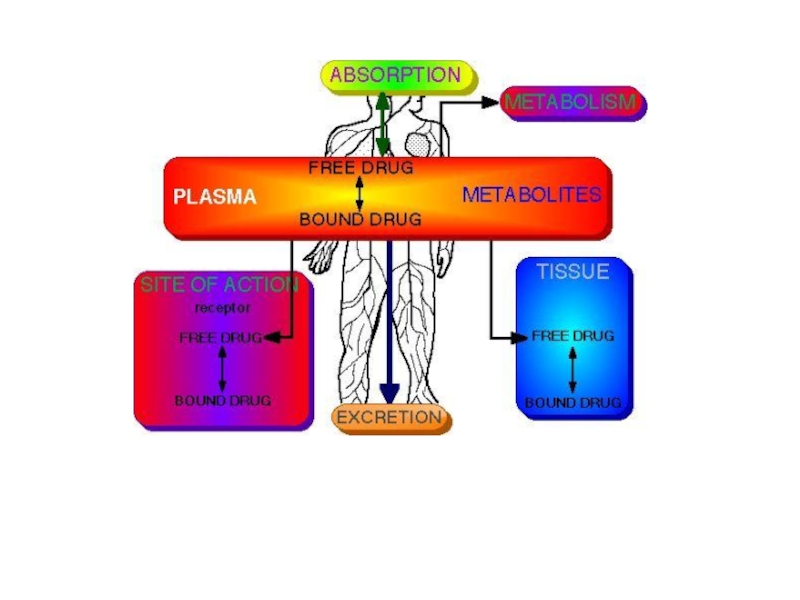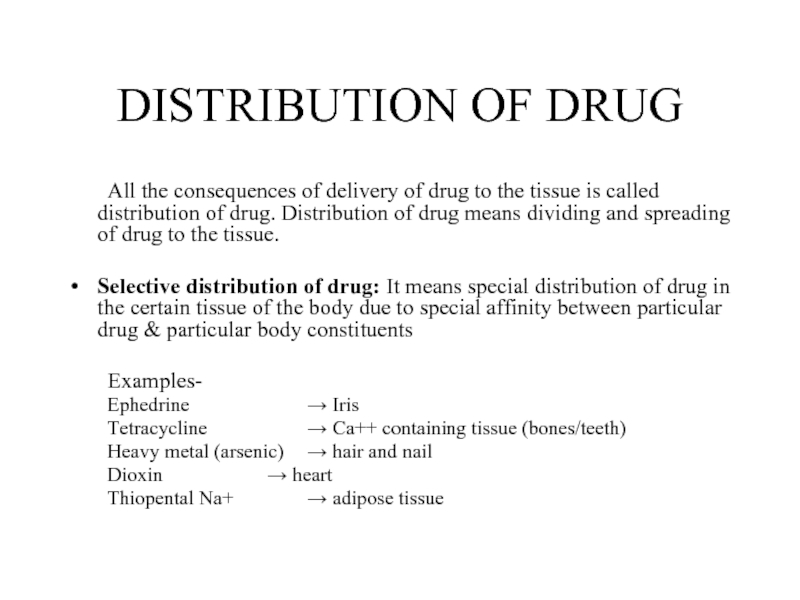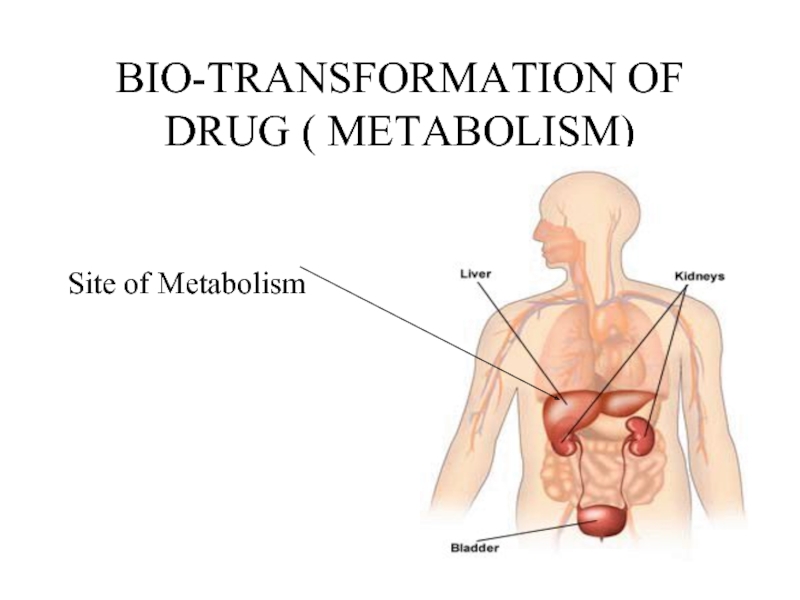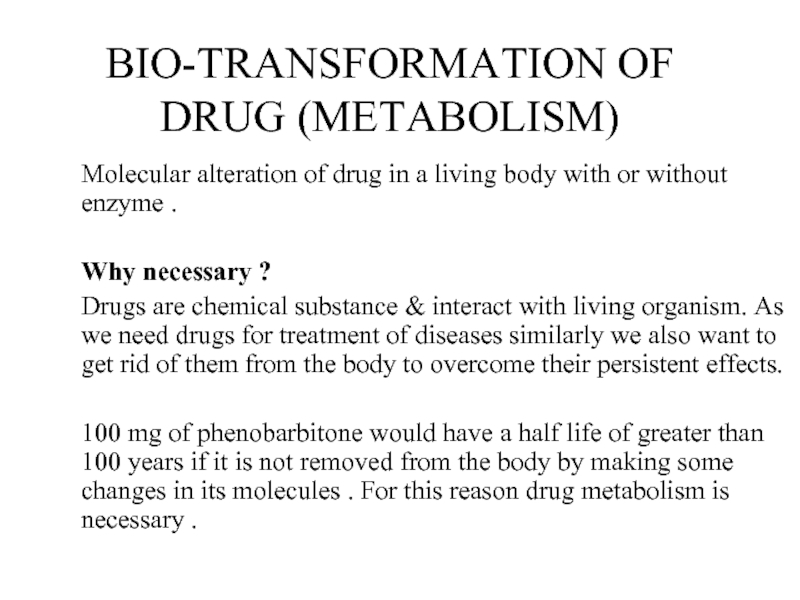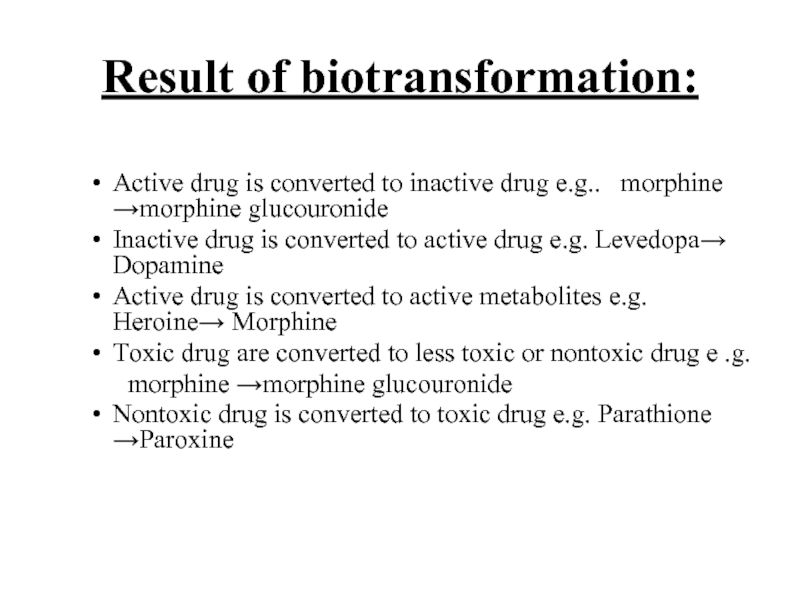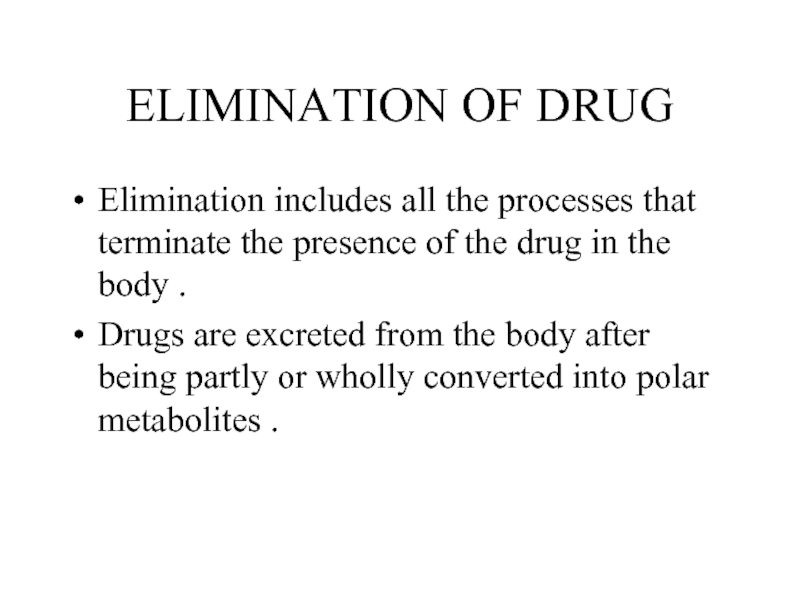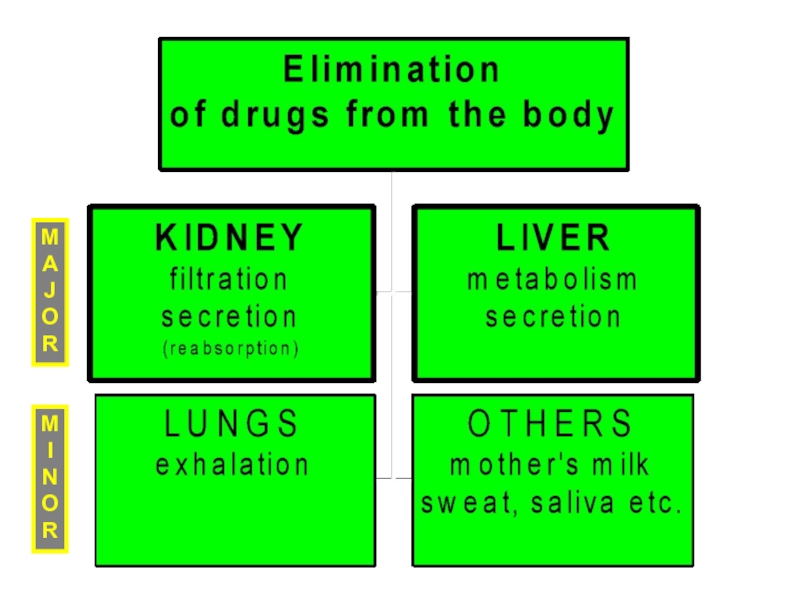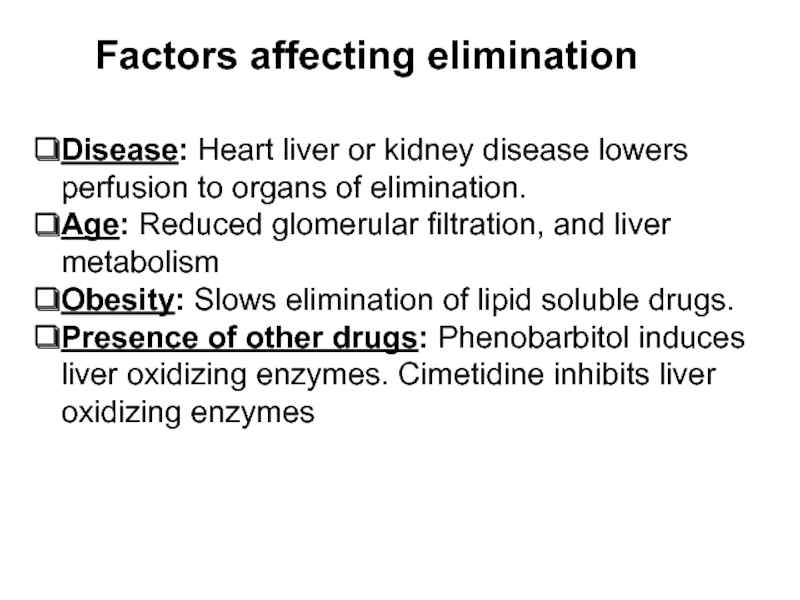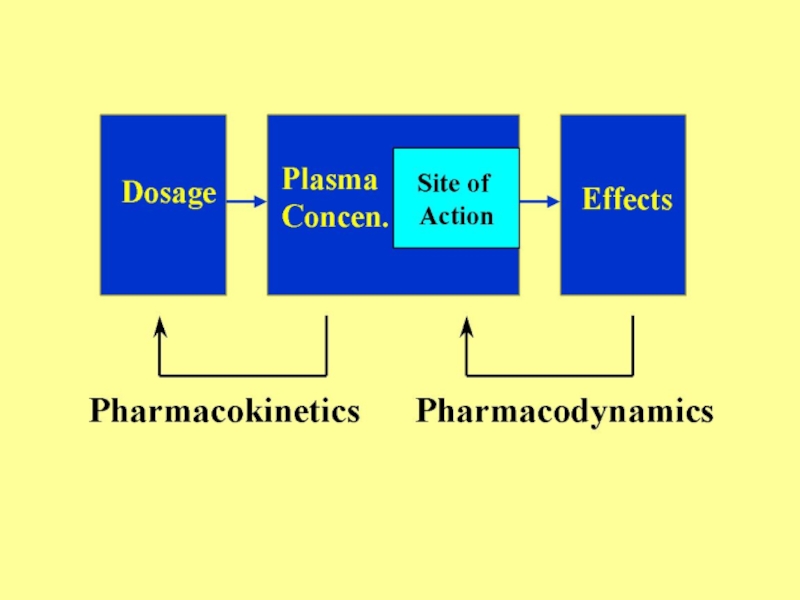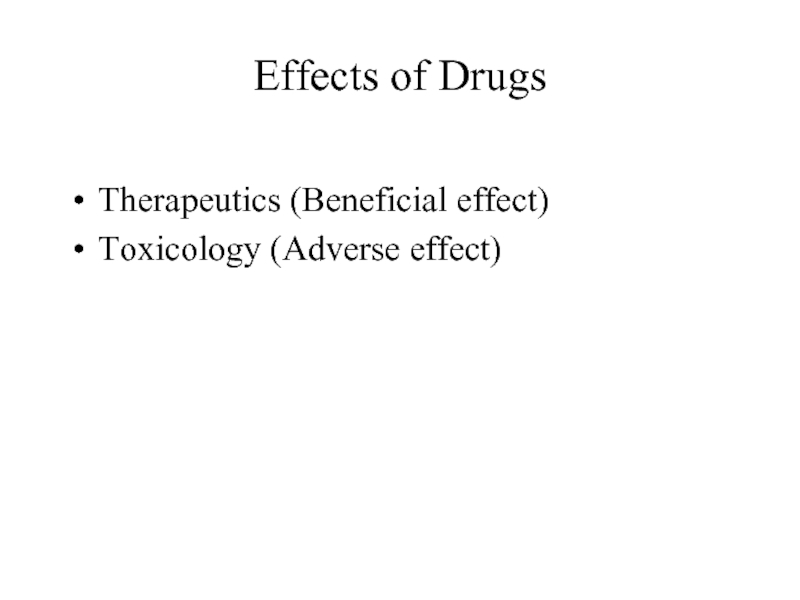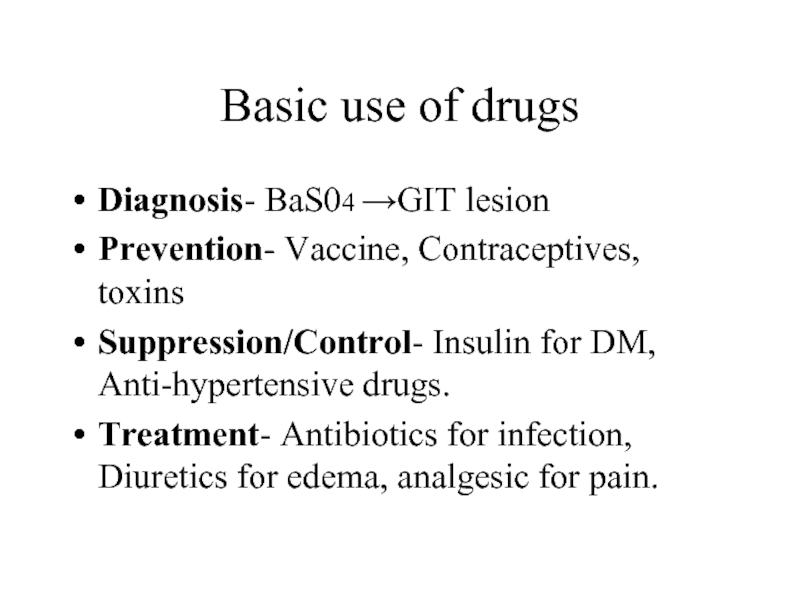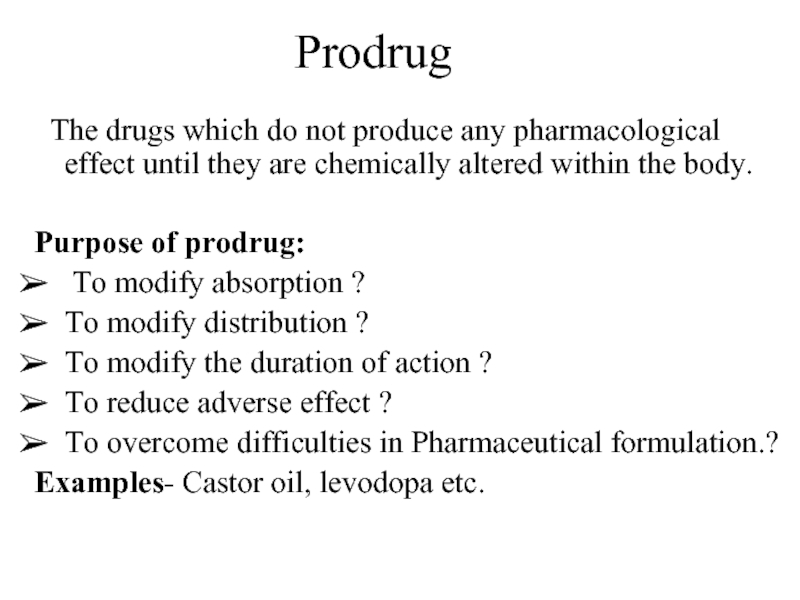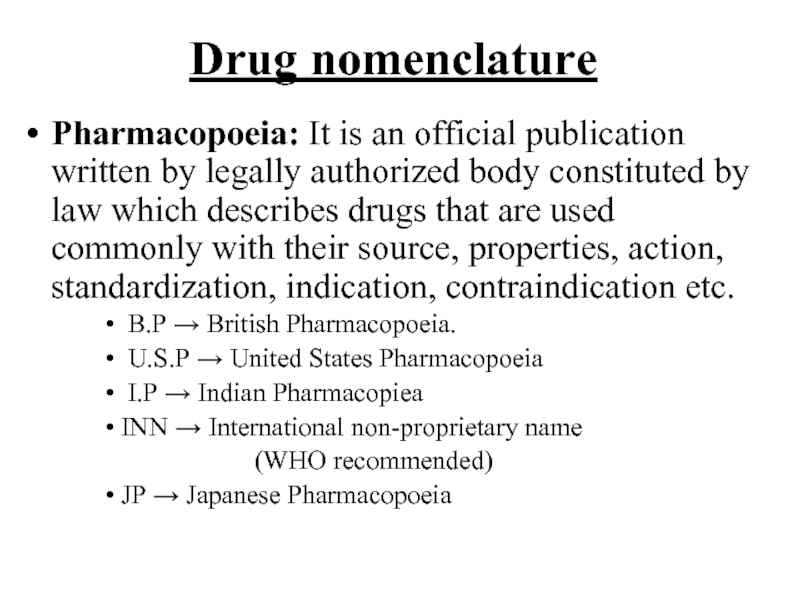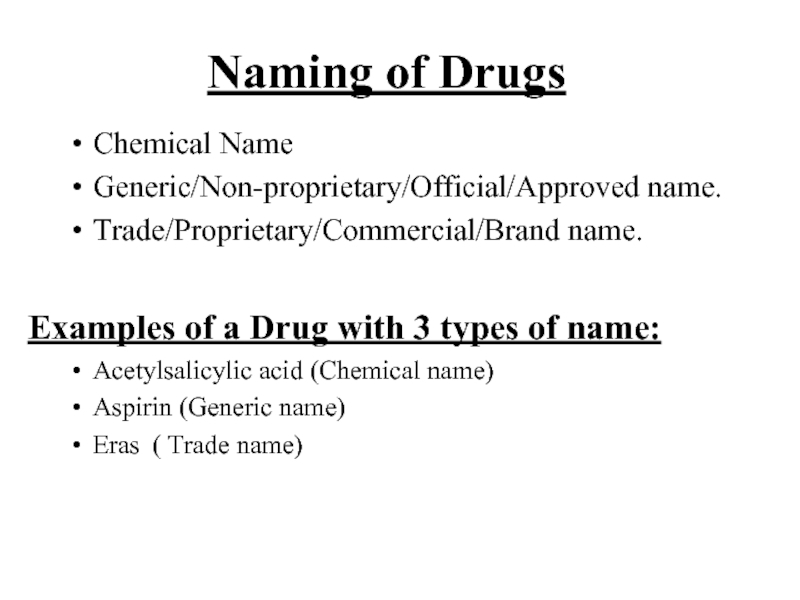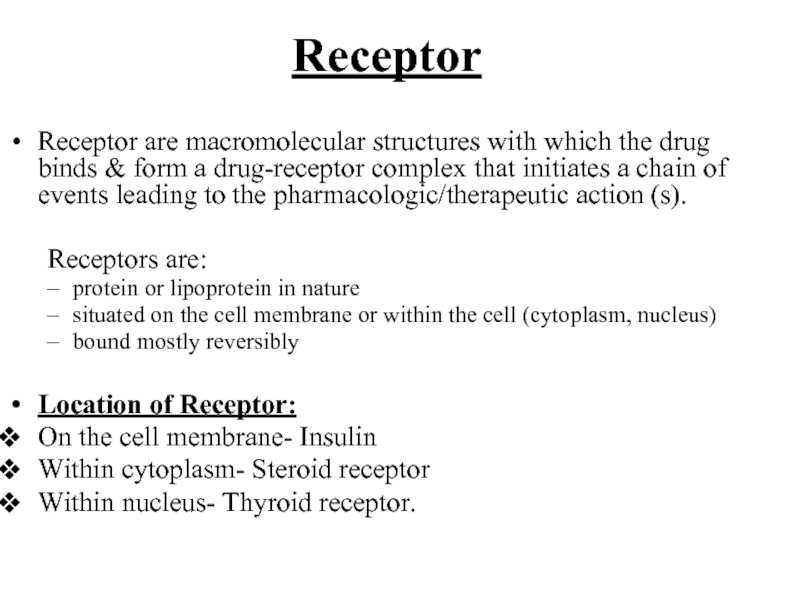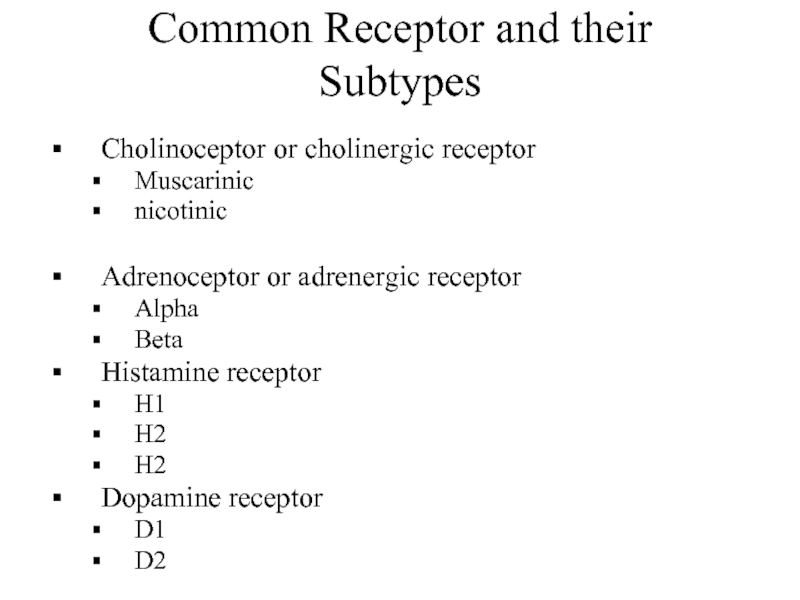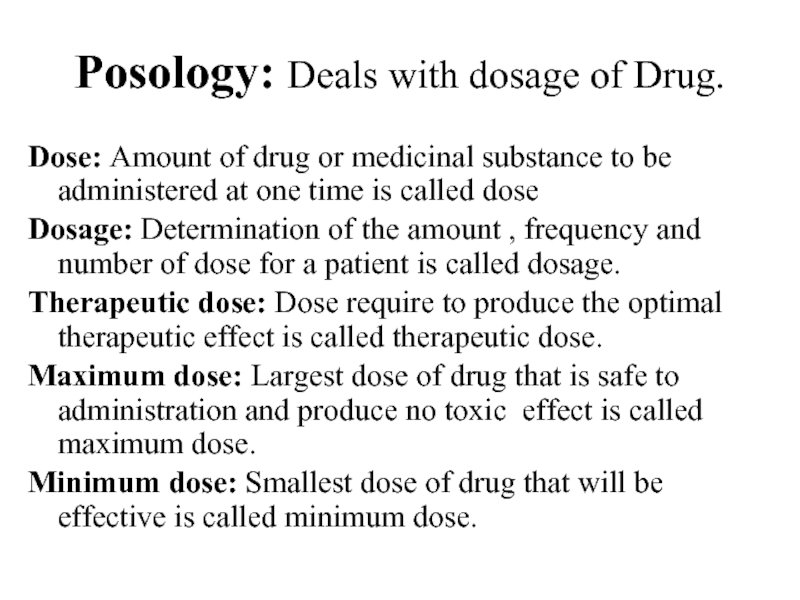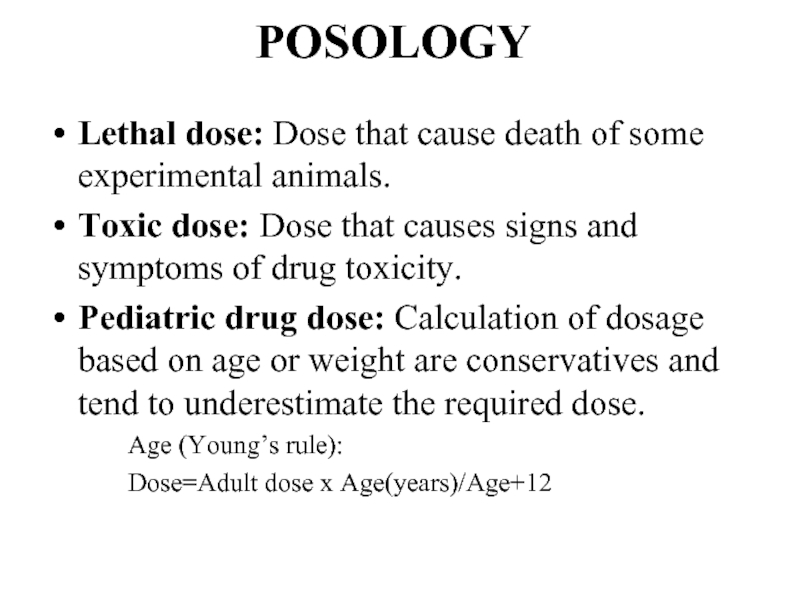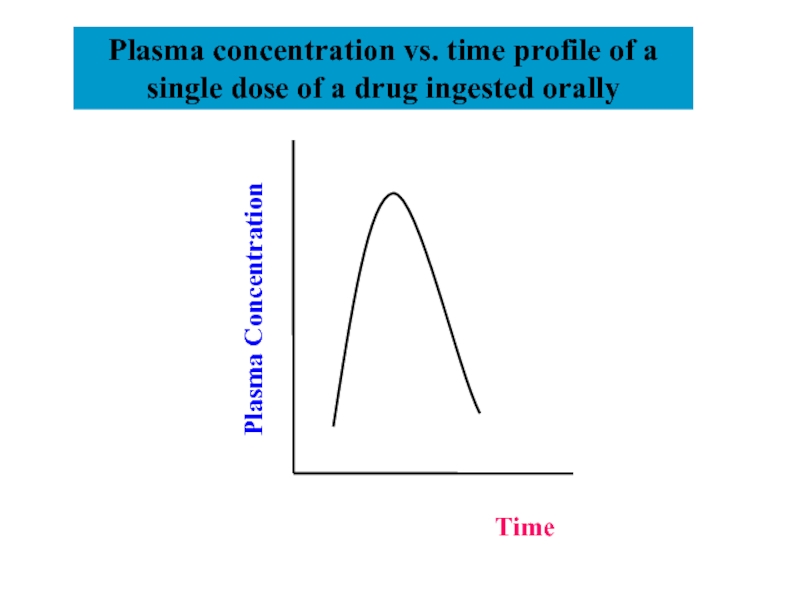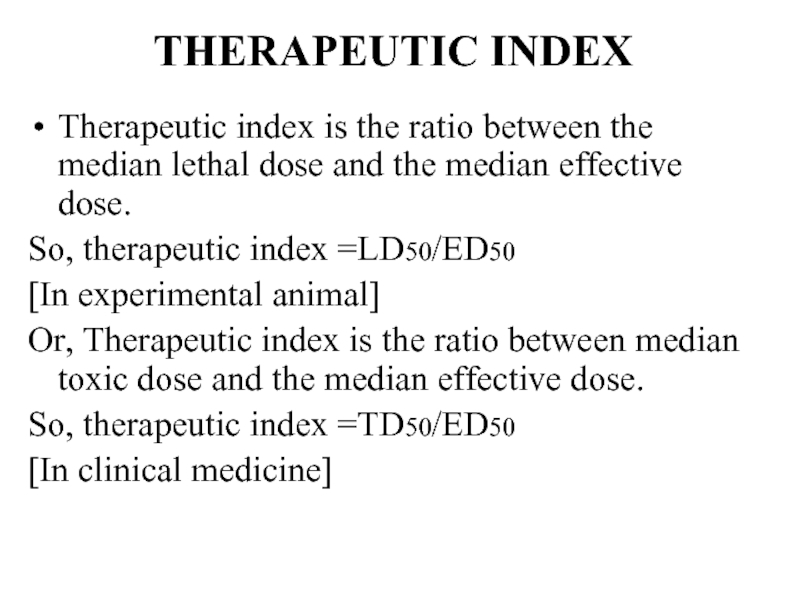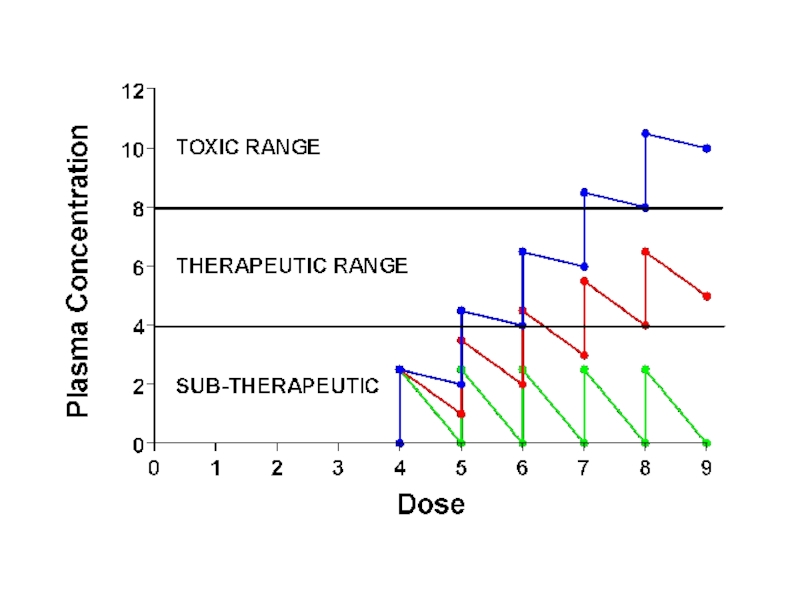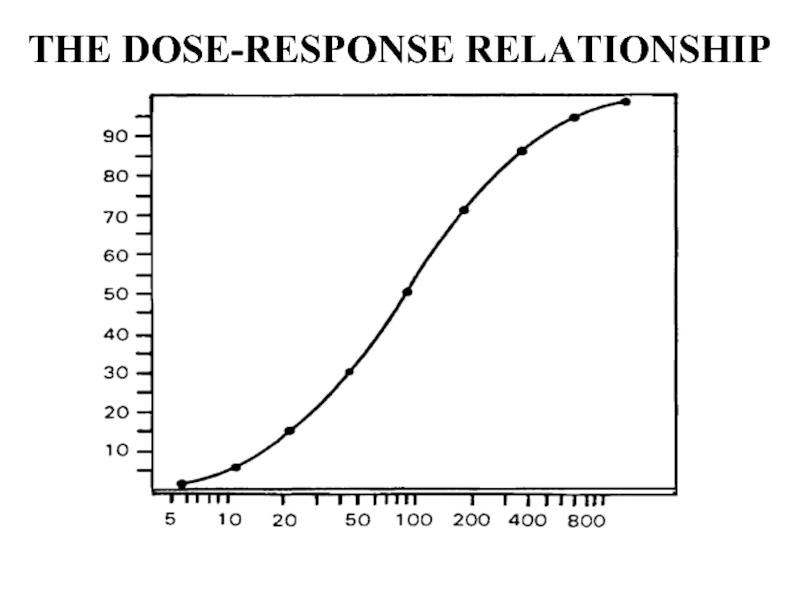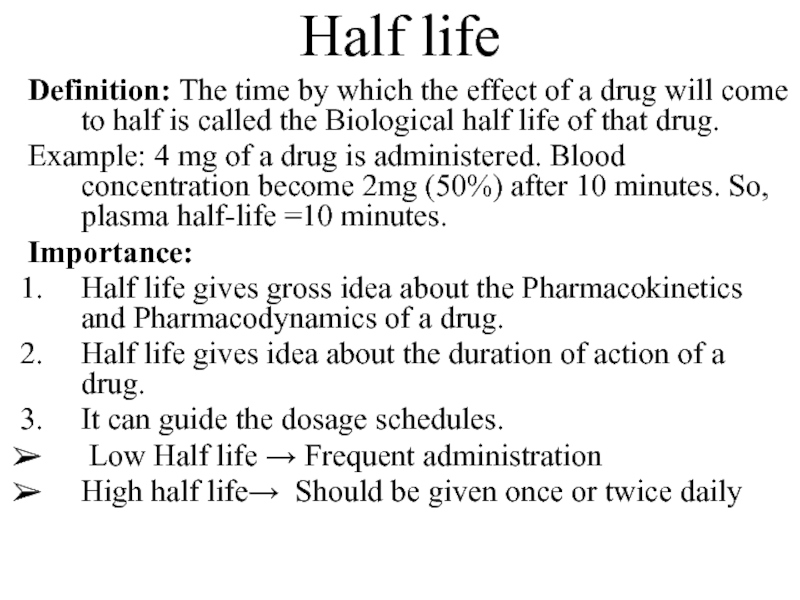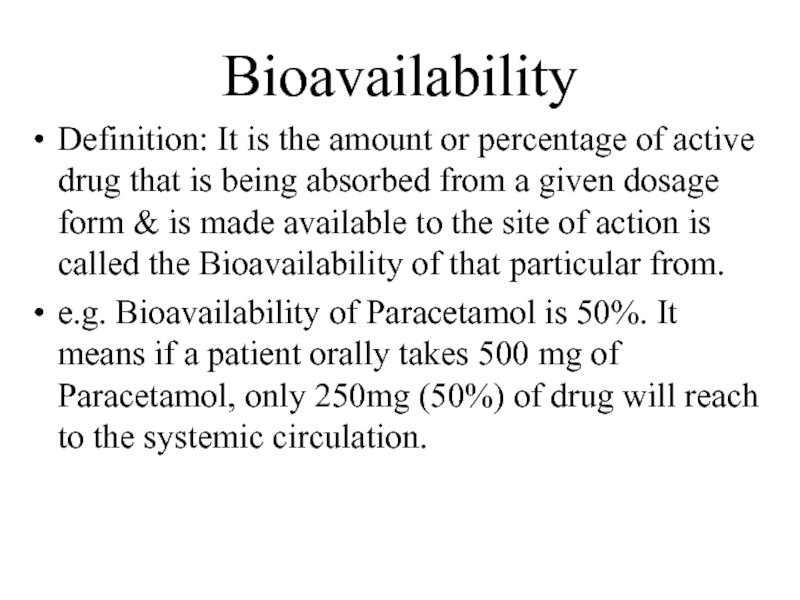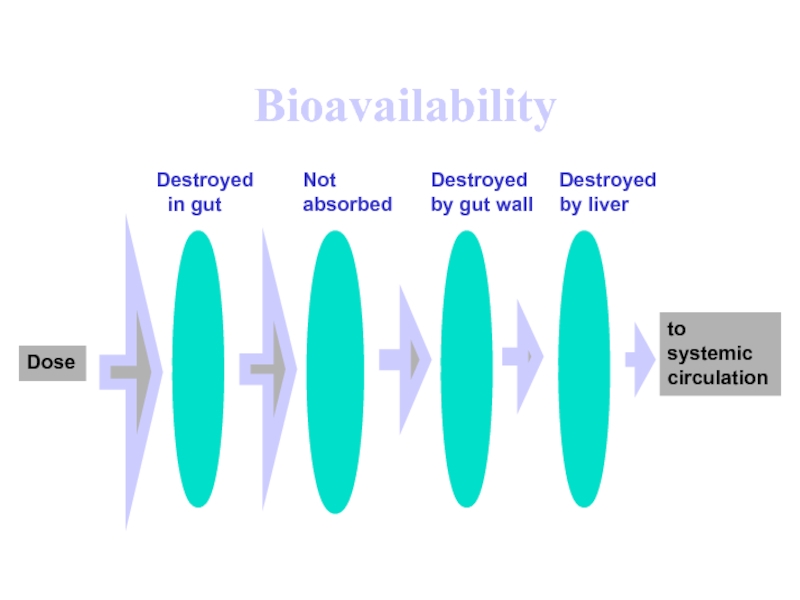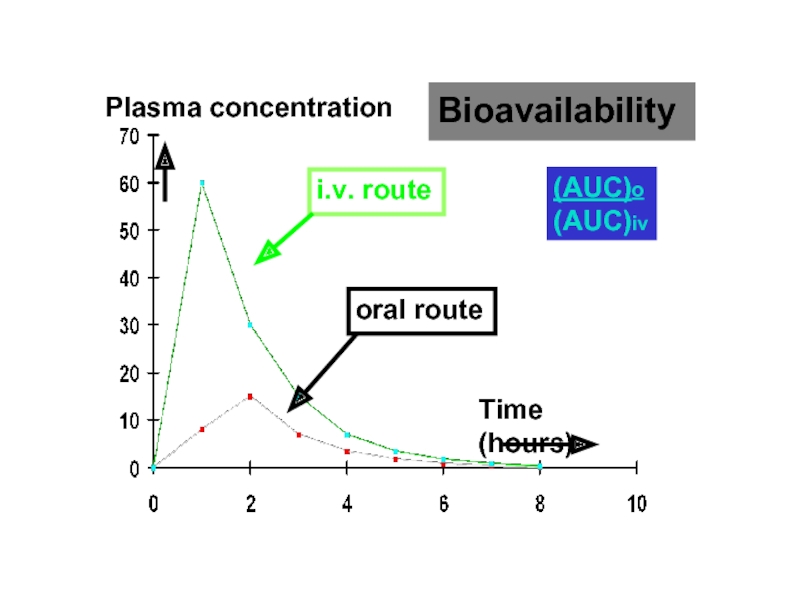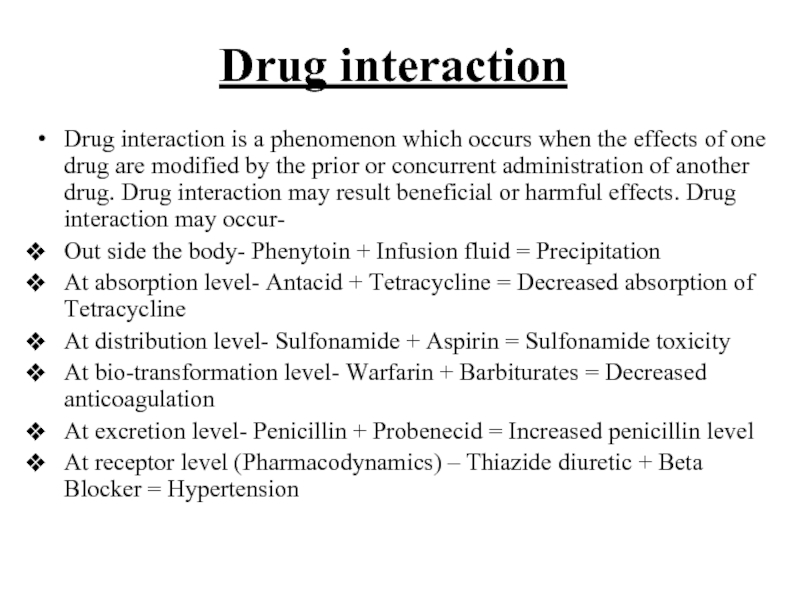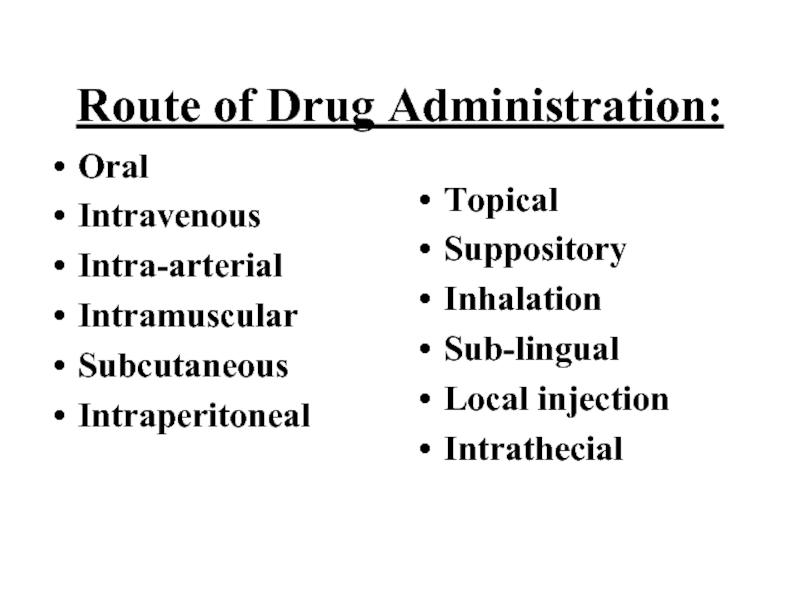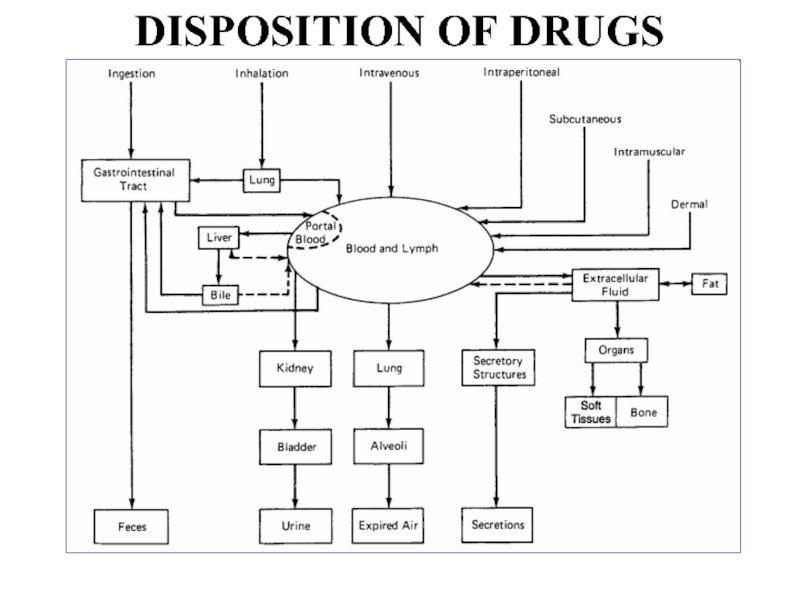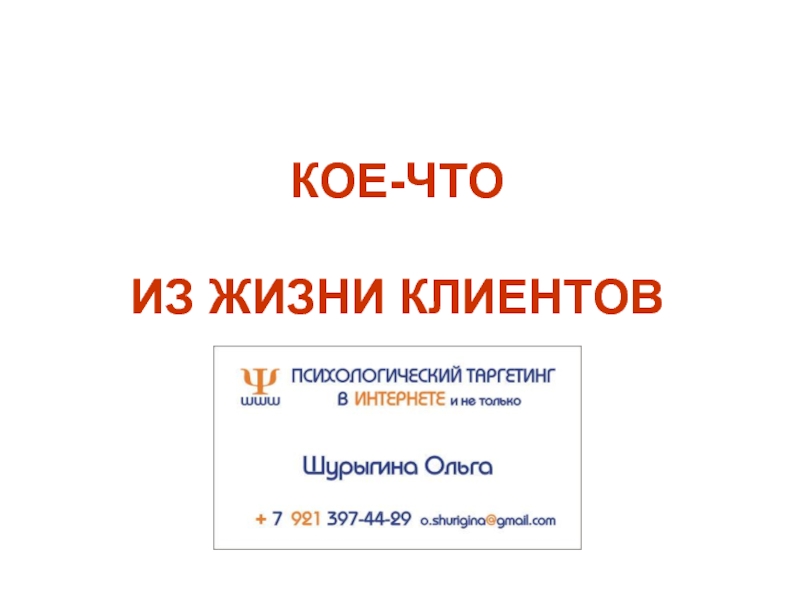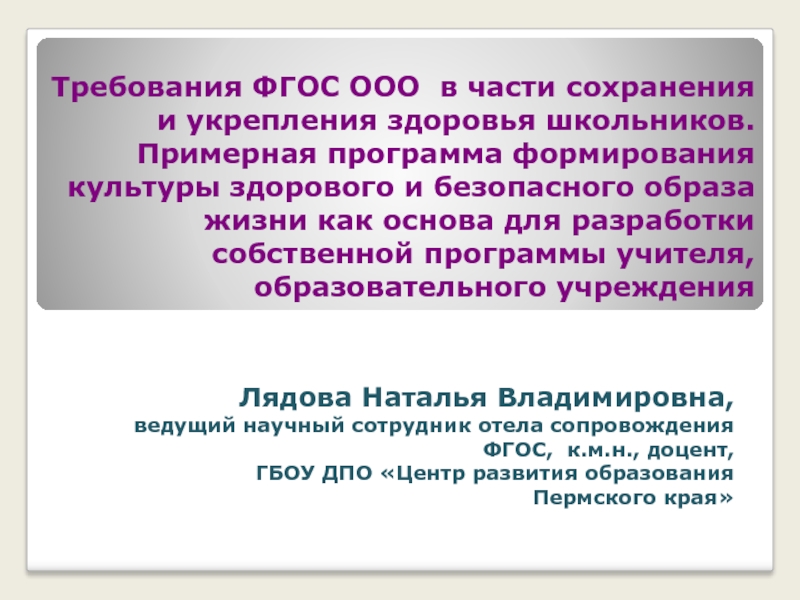- Главная
- Разное
- Дизайн
- Бизнес и предпринимательство
- Аналитика
- Образование
- Развлечения
- Красота и здоровье
- Финансы
- Государство
- Путешествия
- Спорт
- Недвижимость
- Армия
- Графика
- Культурология
- Еда и кулинария
- Лингвистика
- Английский язык
- Астрономия
- Алгебра
- Биология
- География
- Детские презентации
- Информатика
- История
- Литература
- Маркетинг
- Математика
- Медицина
- Менеджмент
- Музыка
- МХК
- Немецкий язык
- ОБЖ
- Обществознание
- Окружающий мир
- Педагогика
- Русский язык
- Технология
- Физика
- Философия
- Химия
- Шаблоны, картинки для презентаций
- Экология
- Экономика
- Юриспруденция
Basics of PHARMACOLOGY презентация
Содержание
- 1. Basics of PHARMACOLOGY
- 2. The word Pharmacology is derived from Greek
- 3. BASIC PHARMACOLOGY Definition: Pharmacology is a subject
- 4. Pharmacokinetics Greek word-Pharmakon means drug, Kinein means:
- 6. ABSORPTION OF DRUG The process by
- 7. DISTRIBUTION OF DRUG All the consequences of
- 8. BIO-TRANSFORMATION OF DRUG ( METABOLISM) Site of Metabolism
- 9. BIO-TRANSFORMATION OF DRUG (METABOLISM) Molecular alteration of
- 10. Result of biotransformation: Active drug is
- 11. ELIMINATION OF DRUG Elimination includes all
- 12. Routes of excretion of drug Major
- 13. MAJOR MINOR
- 14. Factors affecting elimination Disease: Heart liver or
- 15. PHARMACODYNAMICS It is a branch of Pharmacology
- 17. Effects of Drugs Therapeutics (Beneficial effect) Toxicology (Adverse effect)
- 18. Drug- Derived from Drouge (French word) =
- 19. Basic use of drugs Diagnosis- BaS04 →GIT
- 20. Prodrug The drugs which do not
- 21. Drug nomenclature Pharmacopoeia: It is an official
- 22. Naming of Drugs Chemical Name Generic/Non-proprietary/Official/Approved name.
- 23. Receptor Receptor are macromolecular structures with which
- 24. Common Receptor and their Subtypes Cholinoceptor or
- 25. Common Receptor and their Subtypes-- continued 5-hydroxytryptamine
- 26. Drug-Receptor Terminologies Affinity: Affinity is the tendency
- 27. Posology: Deals with dosage of Drug. Dose:
- 28. POSOLOGY Lethal dose: Dose that cause death
- 29. POSOLOGY Booster dose: An additional dose( of
- 30. Plasma Concentration Time Plasma concentration vs.
- 31. POSOLOGY ED50(Median effective dose): The dose at
- 32. THERAPEUTIC INDEX Therapeutic index is the ratio
- 34. THE DOSE-RESPONSE RELATIONSHIP
- 35. Half life Definition: The time by which
- 36. Bioavailability Definition: It is the amount
- 37. Bioavailability
- 38. Plasma concentration Time (hours) i.v. route oral route Bioavailability (AUC)o (AUC)iv
- 39. Drug interaction Drug interaction is a phenomenon
- 40. Route of Drug Administration: Oral Intravenous Intra-arterial
- 41. DISPOSITION OF DRUGS
- 42. THANK YOU ALL
Слайд 2The word Pharmacology is derived from Greek words pharmakon (=drug= remedy=
to do good) and logos (= a study = science)
Слайд 3BASIC PHARMACOLOGY
Definition: Pharmacology is a subject of medical science which deals
with the study of drugs or medicine that interact with the living system through chemical processes, specially by binding to regulatory molecules and activating or inhibiting body process.
Medical Pharmacology: Branch of Pharmacology deals with the use of Drugs in human body for Diagnosis, Prevention, Suppression and Treatment of the Diseases.
Clinical Pharmacology: Deals with the Scientific study of Drugs( Pharmacokinetics & Pharmacodynamic parameters) in the patients & also in the healthy persons for the safe & effective use of Drugs (Therapy).
Medical Pharmacology: Branch of Pharmacology deals with the use of Drugs in human body for Diagnosis, Prevention, Suppression and Treatment of the Diseases.
Clinical Pharmacology: Deals with the Scientific study of Drugs( Pharmacokinetics & Pharmacodynamic parameters) in the patients & also in the healthy persons for the safe & effective use of Drugs (Therapy).
Слайд 4Pharmacokinetics
Greek word-Pharmakon means drug, Kinein means: To move
It deals with-
Absorption –
taken into the body
Distribution – moved into tissues
Metabolized – changed so can be excreted
Excreted – removed from the body
Distribution – moved into tissues
Metabolized – changed so can be excreted
Excreted – removed from the body
Слайд 6ABSORPTION OF DRUG
The process by which the drug enters into
the systemic circulation from the site of administration ( except intravenous or intra-arterial routes ) through the biological membrane is called absorption of drug .
In case of intravenous or intra-arterial administration the drug is not absorbed and it enters into the circulation directly .
In case of intravenous or intra-arterial administration the drug is not absorbed and it enters into the circulation directly .
Слайд 7DISTRIBUTION OF DRUG
All the consequences of delivery of drug to the
tissue is called distribution of drug. Distribution of drug means dividing and spreading of drug to the tissue.
Selective distribution of drug: It means special distribution of drug in the certain tissue of the body due to special affinity between particular drug & particular body constituents
Examples-
Ephedrine → Iris
Tetracycline → Ca++ containing tissue (bones/teeth)
Heavy metal (arsenic) → hair and nail
Dioxin → heart
Thiopental Na+ → adipose tissue
Selective distribution of drug: It means special distribution of drug in the certain tissue of the body due to special affinity between particular drug & particular body constituents
Examples-
Ephedrine → Iris
Tetracycline → Ca++ containing tissue (bones/teeth)
Heavy metal (arsenic) → hair and nail
Dioxin → heart
Thiopental Na+ → adipose tissue
Слайд 9BIO-TRANSFORMATION OF DRUG (METABOLISM)
Molecular alteration of drug in a living body
with or without enzyme .
Why necessary ?
Drugs are chemical substance & interact with living organism. As we need drugs for treatment of diseases similarly we also want to get rid of them from the body to overcome their persistent effects.
100 mg of phenobarbitone would have a half life of greater than 100 years if it is not removed from the body by making some changes in its molecules . For this reason drug metabolism is necessary .
Why necessary ?
Drugs are chemical substance & interact with living organism. As we need drugs for treatment of diseases similarly we also want to get rid of them from the body to overcome their persistent effects.
100 mg of phenobarbitone would have a half life of greater than 100 years if it is not removed from the body by making some changes in its molecules . For this reason drug metabolism is necessary .
Слайд 10Result of biotransformation:
Active drug is converted to inactive drug e.g..
morphine →morphine glucouronide
Inactive drug is converted to active drug e.g. Levedopa→ Dopamine
Active drug is converted to active metabolites e.g. Heroine→ Morphine
Toxic drug are converted to less toxic or nontoxic drug e .g.
morphine →morphine glucouronide
Nontoxic drug is converted to toxic drug e.g. Parathione →Paroxine
Inactive drug is converted to active drug e.g. Levedopa→ Dopamine
Active drug is converted to active metabolites e.g. Heroine→ Morphine
Toxic drug are converted to less toxic or nontoxic drug e .g.
morphine →morphine glucouronide
Nontoxic drug is converted to toxic drug e.g. Parathione →Paroxine
Слайд 11ELIMINATION OF DRUG
Elimination includes all the processes that terminate the
presence of the drug in the body .
Drugs are excreted from the body after being partly or wholly converted into polar metabolites .
Drugs are excreted from the body after being partly or wholly converted into polar metabolites .
Слайд 12Routes of excretion of drug
Major processes:
Kidney: Frusemide,pathidine ,
Hepato-billiary process:
Tetracycline, Chloramphenicol
Gastro-intestinal: Antacid , BaSO4
Pulmonary: Inhalation anesthetics, Alcohol
Minor processes:
Skin/ sweat glands : Vit-C ,iron, Griseofulvin
Saliva : morphine, caffeine
Breast : morphine ,phenobarbitone
Vagina :Metronidazole
Tear: Rifampicin
Gastro-intestinal: Antacid , BaSO4
Pulmonary: Inhalation anesthetics, Alcohol
Minor processes:
Skin/ sweat glands : Vit-C ,iron, Griseofulvin
Saliva : morphine, caffeine
Breast : morphine ,phenobarbitone
Vagina :Metronidazole
Tear: Rifampicin
Слайд 14Factors affecting elimination
Disease: Heart liver or kidney disease lowers perfusion to
organs of elimination.
Age: Reduced glomerular filtration, and liver metabolism
Obesity: Slows elimination of lipid soluble drugs.
Presence of other drugs: Phenobarbitol induces liver oxidizing enzymes. Cimetidine inhibits liver oxidizing enzymes
Age: Reduced glomerular filtration, and liver metabolism
Obesity: Slows elimination of lipid soluble drugs.
Presence of other drugs: Phenobarbitol induces liver oxidizing enzymes. Cimetidine inhibits liver oxidizing enzymes
Слайд 15PHARMACODYNAMICS
It is a branch of Pharmacology which deals with the effects
of Drug & Mechanism of action.
Слайд 18Drug- Derived from Drouge (French word) = A Dry Herb
Definition: According
to the World Health Organization (WHO),1992-
‘’ A Drug is any substance or product that is used or intended to be used to modify or explore Physiological system or Pathological states for the benefit of the recipient.’’
Aim of Drugs: To improve quality of life.
‘’ A Drug is any substance or product that is used or intended to be used to modify or explore Physiological system or Pathological states for the benefit of the recipient.’’
Aim of Drugs: To improve quality of life.
Слайд 19Basic use of drugs
Diagnosis- BaS04 →GIT lesion
Prevention- Vaccine, Contraceptives, toxins
Suppression/Control- Insulin
for DM, Anti-hypertensive drugs.
Treatment- Antibiotics for infection, Diuretics for edema, analgesic for pain.
Treatment- Antibiotics for infection, Diuretics for edema, analgesic for pain.
Слайд 20Prodrug
The drugs which do not produce any pharmacological effect until
they are chemically altered within the body.
Purpose of prodrug:
To modify absorption ?
To modify distribution ?
To modify the duration of action ?
To reduce adverse effect ?
To overcome difficulties in Pharmaceutical formulation.?
Examples- Castor oil, levodopa etc.
Purpose of prodrug:
To modify absorption ?
To modify distribution ?
To modify the duration of action ?
To reduce adverse effect ?
To overcome difficulties in Pharmaceutical formulation.?
Examples- Castor oil, levodopa etc.
Слайд 21Drug nomenclature
Pharmacopoeia: It is an official publication written by legally authorized
body constituted by law which describes drugs that are used commonly with their source, properties, action, standardization, indication, contraindication etc.
B.P → British Pharmacopoeia.
U.S.P → United States Pharmacopoeia
I.P → Indian Pharmacopiea
INN → International non-proprietary name
(WHO recommended)
JP → Japanese Pharmacopoeia
B.P → British Pharmacopoeia.
U.S.P → United States Pharmacopoeia
I.P → Indian Pharmacopiea
INN → International non-proprietary name
(WHO recommended)
JP → Japanese Pharmacopoeia
Слайд 22Naming of Drugs
Chemical Name
Generic/Non-proprietary/Official/Approved name.
Trade/Proprietary/Commercial/Brand name.
Examples of a Drug with 3
types of name:
Acetylsalicylic acid (Chemical name)
Aspirin (Generic name)
Eras ( Trade name)
Acetylsalicylic acid (Chemical name)
Aspirin (Generic name)
Eras ( Trade name)
Слайд 23Receptor
Receptor are macromolecular structures with which the drug binds & form
a drug-receptor complex that initiates a chain of events leading to the pharmacologic/therapeutic action (s).
Receptors are:
protein or lipoprotein in nature
situated on the cell membrane or within the cell (cytoplasm, nucleus)
bound mostly reversibly
Location of Receptor:
On the cell membrane- Insulin
Within cytoplasm- Steroid receptor
Within nucleus- Thyroid receptor.
Receptors are:
protein or lipoprotein in nature
situated on the cell membrane or within the cell (cytoplasm, nucleus)
bound mostly reversibly
Location of Receptor:
On the cell membrane- Insulin
Within cytoplasm- Steroid receptor
Within nucleus- Thyroid receptor.
Слайд 24Common Receptor and their Subtypes
Cholinoceptor or cholinergic receptor
Muscarinic
nicotinic
Adrenoceptor
or adrenergic receptor
Alpha
Beta
Histamine receptor
H1
H2
H2
Dopamine receptor
D1
D2
Alpha
Beta
Histamine receptor
H1
H2
H2
Dopamine receptor
D1
D2
Слайд 25Common Receptor and their Subtypes-- continued
5-hydroxytryptamine receptor
5-HT1
5-HT2
5-HT3
Opoid receptor
Mu
Kappa
delta
GABA receptor
GABA1
GABA2
Prostaglandin receptor
Слайд 26Drug-Receptor Terminologies
Affinity: Affinity is the tendency of drug to bind with
a receptor.
Efficacy: The effect produce by a drug is called efficacy.
Potency: The power of a drug to produce the desired effect is called potency.
Agonist: Drugs having affinity as well as efficacy are called agonist. E.g. Sulbutamol → Beta-receptor agonist
Antagonist: Drugs having affinity but lacking efficacy are called antagonist. E.g. Atropine → Muscarinic antagonist.
Efficacy: The effect produce by a drug is called efficacy.
Potency: The power of a drug to produce the desired effect is called potency.
Agonist: Drugs having affinity as well as efficacy are called agonist. E.g. Sulbutamol → Beta-receptor agonist
Antagonist: Drugs having affinity but lacking efficacy are called antagonist. E.g. Atropine → Muscarinic antagonist.
Слайд 27Posology: Deals with dosage of Drug.
Dose: Amount of drug or medicinal
substance to be administered at one time is called dose
Dosage: Determination of the amount , frequency and number of dose for a patient is called dosage.
Therapeutic dose: Dose require to produce the optimal therapeutic effect is called therapeutic dose.
Maximum dose: Largest dose of drug that is safe to administration and produce no toxic effect is called maximum dose.
Minimum dose: Smallest dose of drug that will be effective is called minimum dose.
Dosage: Determination of the amount , frequency and number of dose for a patient is called dosage.
Therapeutic dose: Dose require to produce the optimal therapeutic effect is called therapeutic dose.
Maximum dose: Largest dose of drug that is safe to administration and produce no toxic effect is called maximum dose.
Minimum dose: Smallest dose of drug that will be effective is called minimum dose.
Слайд 28POSOLOGY
Lethal dose: Dose that cause death of some experimental animals.
Toxic dose:
Dose that causes signs and symptoms of drug toxicity.
Pediatric drug dose: Calculation of dosage based on age or weight are conservatives and tend to underestimate the required dose.
Age (Young’s rule):
Dose=Adult dose x Age(years)/Age+12
Pediatric drug dose: Calculation of dosage based on age or weight are conservatives and tend to underestimate the required dose.
Age (Young’s rule):
Dose=Adult dose x Age(years)/Age+12
Слайд 29POSOLOGY
Booster dose: An additional dose( of an immunizing agent) to increase
the protection afforded by the original series of injections. The booster dose is given some months or years after the initial immunization.
Loading dose: The “loading dose” is one or series of doses that may be given at the onset of therapy with the aim of achieving the target concentration rapidly.
Maintenance dose: Dose required to maintain the desired effect that is achieved by preceding dose.
Test dose: Amount of drug given initially ( before giving full therapeutic dose) to see the response of drug to tissue is called test dose.
Fatal dose: Amount of dose that cause death of 100% of experimental animals.
Loading dose: The “loading dose” is one or series of doses that may be given at the onset of therapy with the aim of achieving the target concentration rapidly.
Maintenance dose: Dose required to maintain the desired effect that is achieved by preceding dose.
Test dose: Amount of drug given initially ( before giving full therapeutic dose) to see the response of drug to tissue is called test dose.
Fatal dose: Amount of dose that cause death of 100% of experimental animals.
Слайд 30Plasma Concentration
Time
Plasma concentration vs. time profile of a single dose of
a drug ingested orally
Слайд 31POSOLOGY
ED50(Median effective dose): The dose at which 50% of individual exhibit
the specified quantal effect is called ED50
TD50(Median toxic dose): The dose required to produce a particular toxic effect in 50% of test animals is called TD50.
LD50(Median lethal dose): The dose required to produce death in 50% of experimental animals is called the LD50.
TD50(Median toxic dose): The dose required to produce a particular toxic effect in 50% of test animals is called TD50.
LD50(Median lethal dose): The dose required to produce death in 50% of experimental animals is called the LD50.
Слайд 32THERAPEUTIC INDEX
Therapeutic index is the ratio between the median lethal dose
and the median effective dose.
So, therapeutic index =LD50/ED50
[In experimental animal]
Or, Therapeutic index is the ratio between median toxic dose and the median effective dose.
So, therapeutic index =TD50/ED50
[In clinical medicine]
So, therapeutic index =LD50/ED50
[In experimental animal]
Or, Therapeutic index is the ratio between median toxic dose and the median effective dose.
So, therapeutic index =TD50/ED50
[In clinical medicine]
Слайд 35Half life
Definition: The time by which the effect of a drug
will come to half is called the Biological half life of that drug.
Example: 4 mg of a drug is administered. Blood concentration become 2mg (50%) after 10 minutes. So, plasma half-life =10 minutes.
Importance:
Half life gives gross idea about the Pharmacokinetics and Pharmacodynamics of a drug.
Half life gives idea about the duration of action of a drug.
It can guide the dosage schedules.
Low Half life → Frequent administration
High half life→ Should be given once or twice daily
Example: 4 mg of a drug is administered. Blood concentration become 2mg (50%) after 10 minutes. So, plasma half-life =10 minutes.
Importance:
Half life gives gross idea about the Pharmacokinetics and Pharmacodynamics of a drug.
Half life gives idea about the duration of action of a drug.
It can guide the dosage schedules.
Low Half life → Frequent administration
High half life→ Should be given once or twice daily
Слайд 36Bioavailability
Definition: It is the amount or percentage of active drug that
is being absorbed from a given dosage form & is made available to the site of action is called the Bioavailability of that particular from.
e.g. Bioavailability of Paracetamol is 50%. It means if a patient orally takes 500 mg of Paracetamol, only 250mg (50%) of drug will reach to the systemic circulation.
e.g. Bioavailability of Paracetamol is 50%. It means if a patient orally takes 500 mg of Paracetamol, only 250mg (50%) of drug will reach to the systemic circulation.
Слайд 37Bioavailability
Dose
Destroyed
in gut
Not
absorbed
Destroyed
by gut wall
Destroyed
by liver
to
systemic
circulation
Слайд 39Drug interaction
Drug interaction is a phenomenon which occurs when the effects
of one drug are modified by the prior or concurrent administration of another drug. Drug interaction may result beneficial or harmful effects. Drug interaction may occur-
Out side the body- Phenytoin + Infusion fluid = Precipitation
At absorption level- Antacid + Tetracycline = Decreased absorption of Tetracycline
At distribution level- Sulfonamide + Aspirin = Sulfonamide toxicity
At bio-transformation level- Warfarin + Barbiturates = Decreased anticoagulation
At excretion level- Penicillin + Probenecid = Increased penicillin level
At receptor level (Pharmacodynamics) – Thiazide diuretic + Beta Blocker = Hypertension
Out side the body- Phenytoin + Infusion fluid = Precipitation
At absorption level- Antacid + Tetracycline = Decreased absorption of Tetracycline
At distribution level- Sulfonamide + Aspirin = Sulfonamide toxicity
At bio-transformation level- Warfarin + Barbiturates = Decreased anticoagulation
At excretion level- Penicillin + Probenecid = Increased penicillin level
At receptor level (Pharmacodynamics) – Thiazide diuretic + Beta Blocker = Hypertension
